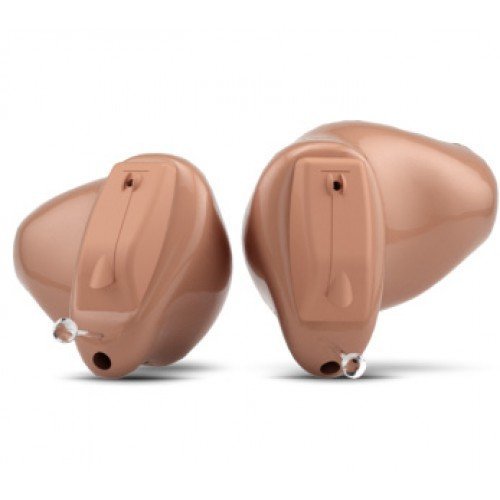Hearing aids are life-changing devices for those experiencing hearing loss, enabling them to reconnect with the world of sound. However, one of the most common questions among people considering these devices is related to the hearing aid price. The price of hearing aids can vary widely depending on various factors, including the technology used, the brand, the features offered, and even the country or city where they are purchased. Globally, hearing aid prices can range from as low as $500 for basic models to over $6,000 for premium devices. These price variations can often cause confusion for those who are new to the hearing aid market.
In general, hearing aids are considered a significant investment because they combine sophisticated digital technology with medical-grade precision. The high costs are primarily driven by the research, development, and precision manufacturing of these devices, as well as the professional services such as hearing tests, fitting, and post-purchase support that often come bundled with them. It is important for consumers to understand that the price does not just cover the device itself but also includes services that ensure the best hearing experience.
Factors Influencing Hearing Aid Price
Several key factors influence the hearing aid price, and understanding them can help individuals make informed decisions. One of the primary determinants is the technology level. Advanced hearing aids with features such as noise reduction, Bluetooth connectivity, directional microphones, and rechargeable batteries tend to be more expensive than basic analog models. Additionally, hearing aids that offer personalization features through smartphone apps or artificial intelligence (AI)-based sound adjustments command a higher price.
Another influencing factor is the style of the hearing aid. Devices that are custom-molded to fit inside the ear canal (In-The-Canal or Invisible-In-Canal models) generally cost more than Behind-The-Ear (BTE) models because of the specialized fitting process. Brand reputation also plays a significant role. Leading global brands such as Siemens, Phonak, Oticon, and Starkey have developed a reputation for quality, reliability, and innovation, which is often reflected in their pricing structures. Finally, the service package offered by the hearing aid provider, including hearing assessments, device fitting, and after-sales services, can add to the total cost of ownership.
Overview of Siemens Hearing Aids
Siemens, now operating under the brand Signia, is a globally recognized leader in hearing aid technology. Known for their innovation, high-quality components, and sophisticated features, Siemens hearing aids have been a popular choice worldwide, including in countries like Pakistan. Siemens offers a wide range of hearing aids catering to different levels of hearing loss, user preferences, and budgets. Their product lines include models like the Pure, Motion, Styletto, and Silk, each offering unique features and fitting styles.
Siemens hearing aids are particularly known for incorporating cutting-edge technologies such as Own Voice Processing (OVP), Speech Focus, Bluetooth streaming, and rechargeable lithium-ion batteries. These features ensure clear sound quality, seamless user experience, and long battery life, making them a worthwhile investment for many users. However, these features also contribute to the premium price tag often associated with Siemens hearing aids. Despite the higher upfront costs, many users find the benefits and long-term durability of Siemens devices to be cost-effective over time.
Siemens Hearing Aid Prices in Pakistan
When it comes to Siemens hearing aid prices in Pakistan, several factors affect the final price tag, including the model, technology level, and where you purchase the device. On average, Siemens hearing aids in Pakistan can range from PKR 60,000 for entry-level models to PKR 500,000 or more for advanced models with premium features. The pricing also varies depending on whether the device is purchased directly from authorized distributors, hospitals, or hearing aid clinics.
Due to import taxes, currency fluctuations, and local dealer margins, Siemens hearing aid prices in Pakistan can sometimes be higher than in Western countries. However, authorized distributors in Pakistan often provide bundled services like hearing assessments, fitting, and warranty coverage, which adds value to the purchase. It is advisable for potential buyers to consult with certified hearing aid centers and audiologists in Pakistan to get the most accurate pricing and product recommendations based on their hearing needs and budget.
Additionally, some clinics and hearing centers in Pakistan offer flexible payment plans or discounts on older models, making Siemens hearing aids more accessible to a wider audience. With the growing awareness of hearing health and the availability of modern hearing aid solutions, more people in Pakistan are now able to invest in devices like Siemens, which promise both comfort and exceptional sound quality.
Conclusion
Purchasing a hearing aid is not just a medical decision but also a financial one, given the considerable hearing aid price involved. Whether you are considering a Siemens hearing aid or another reputable brand, it is crucial to weigh the costs against the features, technology, and support services provided. In Pakistan, Siemens hearing aid prices reflect the brand’s global reputation for innovation, quality, and user satisfaction, though prices may vary depending on the region and the dealer.
Consumers are encouraged to explore different options, compare models, and consult with audiologists before making a final decision. It is also helpful to consider long-term factors like warranty, battery replacement costs, and upgrade options. Informed choices can ensure that the investment made into a hearing aid brings the maximum possible benefit, restoring not only the ability to hear but also improving overall quality of life.
 WhatsApp Us Now
WhatsApp Us Now








 Get Lifetime Guest Post Access for Just ₹499 / $5 - One-Time Payment. Get account before payment.
Get Lifetime Guest Post Access for Just ₹499 / $5 - One-Time Payment. Get account before payment.